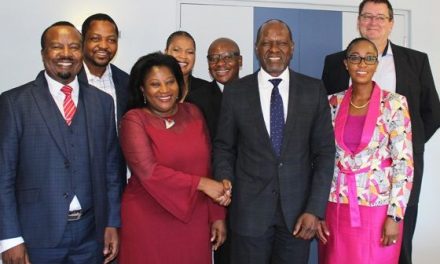
DBN sets eyes on N$2 billion asset base
The Development Bank of Namibia says it is confident of growing its asset base to N$2 billion in the next eight months despite the looming threat of the new SME bank which is set to open its doors around August.
CEO David Nuyoma told The Economist in a wide-ranging interview on Tuesday that the bank was poised to achieve the milestone in spite of the entry of the SME Bank into the market, which he described as rather welcome.
DBN’s loan book currently stands at N$1.45 billion, up from around N$200 million when the bank was formed eight years ago. Nuyoma said confidently: “Financially, we have made progress steadily, our balance sheet has been growing by more than 30% on an annual basis.
“When we hit the billion dollar asset base, we thought we had reached the pinnacle. But I have realised we are just starting and now we are chasing N$2 billion. We will get it in the next eight months.”
He said the opening of the SME Bank will not have any impact on their ambition as the two banks will play complementary roles rather than being competitors.
He added: “I think it is something that has been misunderstood (the threat posed by SME Bank). When I moved to DBN, I was head of investment promotion in the Ministry of Trade and Industry. I was part of management, and one of the decisions taken then was to review the Small Business Credit Guarantee Trust and transform it into a permanent entity, what is now to become the SME Bank.
“When I moved to DBN, concurrently that exercise was going on. It’s a pity that it has moved a little bit slower than it should have. If you notice, we started our product from N$250,000 going up because the Small Business Credit Guarantee Trust’s ceiling was N$250,000.
“The spacing is already there, so I am naturally excited about it, and sincerely so, because it is going to plug the gap which is existing in the market. It is necessary that we have it. …..we need more financial institutions; the more they come, the merrier. More financial institutions are welcome but in different configurations.”
The Chief Executive Officer said he was proud of the way the bigger loans of his bank have performed. He attributed the success to better management of the companies.
“We have a performance of about 97.8% in terms of effective performance whereas with the SMEs, we have a greater challenge because many of them are new to the business, don’t have the discipline of the business, don’t have the experience, don’t have the technical and management know-how.”
“Luckily, overall if you put them all together because of the low value of the loans (SME loans) it doesn’t draw the bank into non-performance. So our loan book performance is more than 95% all together.”
Nuyoma said the secret to success has been prudent management and the proper handling of loan applications, which he regards as vital.
“First rule, do your appraisal properly. Know the client, the jockey. One thing I have learnt in this business is no matter how well the business plan may be written; it can even be written in gold letters on a very expensive paper, but if the jockey is not right, whether his or her intentions may be noble, it will not work.”
He says the banks put a lot of emphasis on understanding. “ Can that person execute that work or not? That is always my first question. If yes, what proof is there?
“Some people will say ‘But everybody has to start somewhere’ but I always say ‘yes let’s be smart about it; if you haven’t done it before, employ somebody who can, and include that as part of the business expense, it just make sense and then only can it work. That is where we put the emphasis.”
“Secondly, understand the market. One of the reasons why we move around to the regions is not for pleasure, but to understand the context. If someone tells me I want to put up whatever in Orotoweni, I should have a perspective of Orotoweni in Otjiwarango. What are the other businesses around there? How is this community configured? And whether it will work or not? I should have that perspective. If necessary, have a site visit, it is very important that you do that.”
“In other words, let’s know the environment, the context and what is it that we can do to mitigate the risks. Do we propose management? Do we propose a technical solution? What is it that needs to be recommended?”
“If we can see that the risks can be mitigated, then yes, we can take it. If we feel that it is a no go area, then we say ‘sorry’. We can’t say yes to everyone unfortunately.”










































